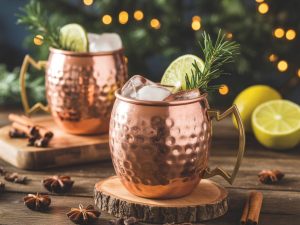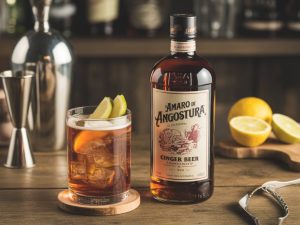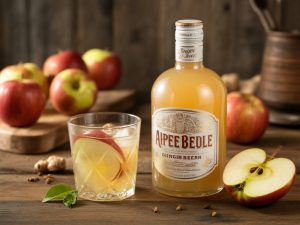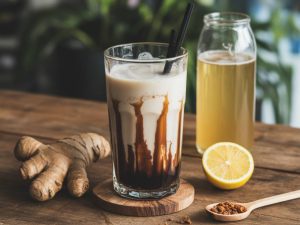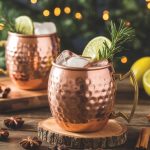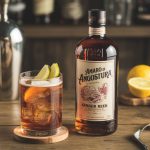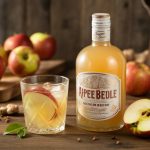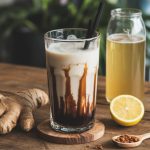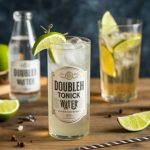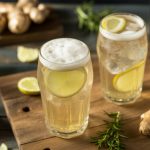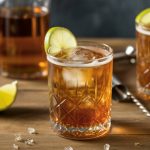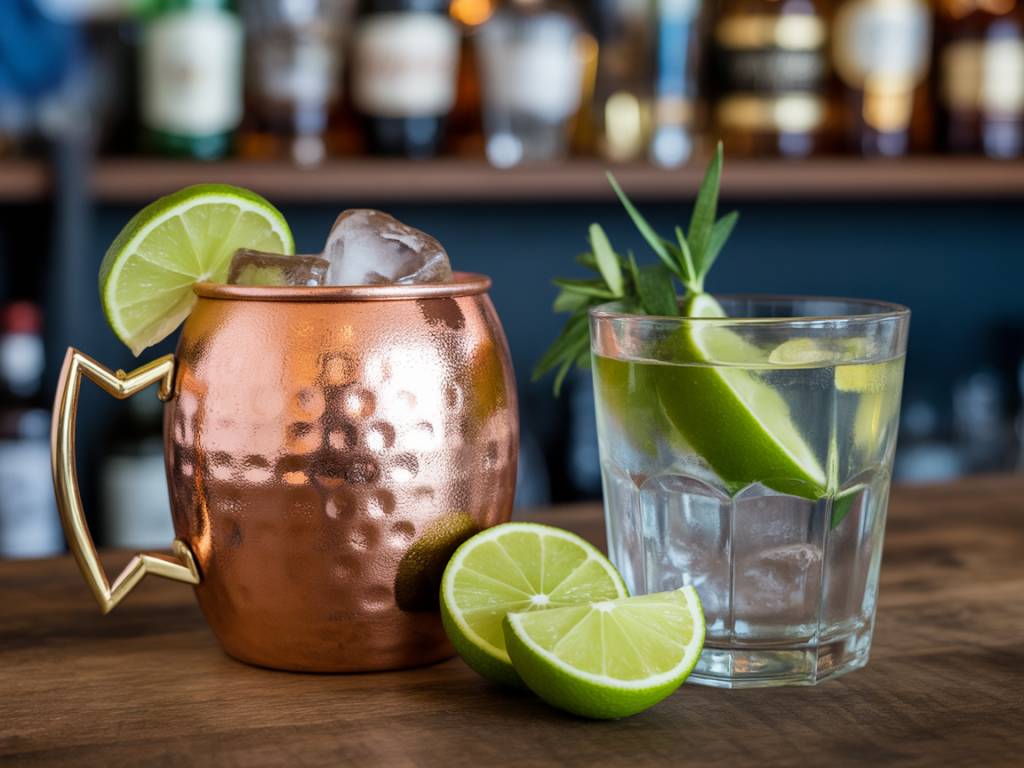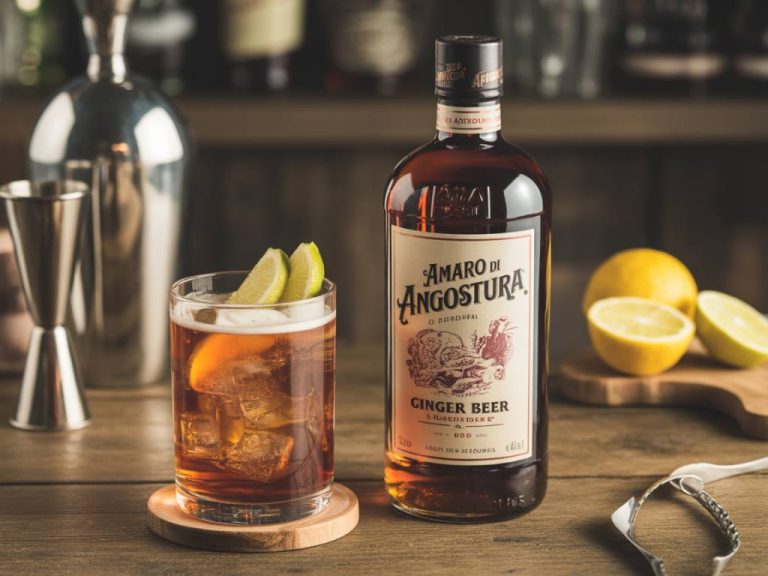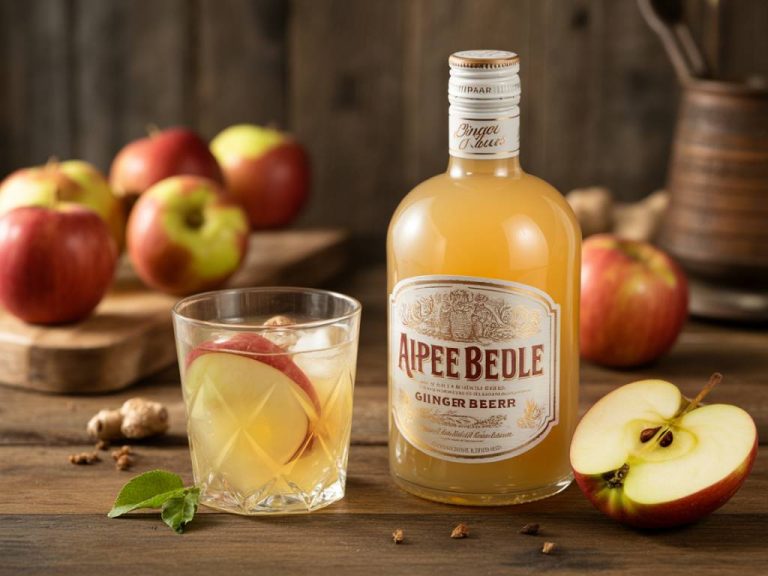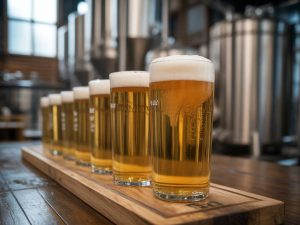The humble beginnings of an icon
It’s a story that starts with three desperate salesmen: a struggling vodka importer, a bar owner with too much ginger beer, and a marketer with a flair for copper mugs. If this sounds like the setup to a joke, think again—the Moscow Mule was born from real-world ingenuity, not cocktail theory.
In the early 1940s, John Martin of Heublein Spirits was trying to get Americans excited about a little-known Russian vodka called Smirnoff. Meanwhile, Jack Morgan, owner of the Cock’n Bull pub in Los Angeles, had launched his own brand of ginger beer—a product with modest traction at the time. When the two met, a conversation (and perhaps a few drinks) sparked the idea of combining vodka and ginger beer in a cocktail served in a custom-made copper mug.
The Moscow Mule quickly took off, its bright, spicy profile and eye-catching presentation making it a post-Prohibition revival darling. But despite this glamorous origin story, the Mule’s journey didn’t end in the 1950s. In fact, its real evolution began after its first peak.
The science of the sip: why it works
Understanding the magic behind the Moscow Mule requires a brief detour into flavor chemistry. At its core, the Mule thrives on a classic principle: contrast and complement.
- Ginger beer offers sharpness and spice, stimulating salivation and waking up the palate.
- Vodka, traditionally a neutral spirit, adds clean alcoholic warmth without competing with the ginger’s complexity.
- Fresh lime juice introduces acidity, cutting through sweetness and tying all the flavors together.
But there’s more happening under the hood. Gingerol, the pungent compound in fresh ginger, undergoes transformation when pasteurized or aged, morphing into zingerone and shogaol—two molecules with heightened warmth and depth. The result? A synergy between sharpness and sweetness that gives the Mule its signature « snap. »
Silver isn’t gold: the rise of flavored variations
While the original Mule emerged in copper mugs, today’s versions aren’t afraid to color outside the lines. In mixology circles, it’s not just about what’s in the glass—it’s about what’s behind the evolution.
From 2010 onward, a new wave of cocktail bars began tinkering with the Mule’s template. Suddenly, ginger beer was no longer a constant—it became a customizable ingredient, adapted to suit seasonal themes or local palates.
- The Mexican Mule: Made with tequila, this variation brings earthy Agave tones that complement ginger’s spice.
- The Kentucky Mule: Swaps vodka for bourbon, introducing vanilla and oak for a rounder profile.
- The Garden Mule: Adds muddled herbs like basil or mint, softening the ginger while offering added fragrance.
- The Berry Mule: Riffs with muddled blackberries or raspberries, where tartness enhances the drink’s freshness.
Flavored ginger beers have also entered the arena: think hibiscus, turmeric, or citrus-infused varieties that create layered complexity. The Mule’s once-rigid formula has now become a mixologist’s canvas.
Why ginger beer matters more than ever
For all its flexibility, the real backbone of any Mule remains the ginger beer. Unfortunately, as the cocktail gained popularity, so did shortcuts in quality. Many mass-market “ginger ales” masquerading as ginger beer deliver little more than sweetened soda with mild ginger essence. A true ginger beer, by contrast, relies on fermentation or concentrated ginger infusion.
At Ginger Beer Promotions, we believe ingredient integrity is vital—not only for taste but for health. Ginger boasts studied benefits: anti-inflammatory properties, digestive aids, even mild analgesic effects through compounds like gingerol and shogaol.
When evaluating ginger beer for your Mule—or any mocktail—the following components are critical:
- Real ginger content: Look for sediment or cloudy appearance as hints of actual ginger infusion.
- Low added sugars: A good ginger beer lets the spice shine without masking it in syrup.
- Carbonation profile: Finer bubbles integrate better into the cocktail without overwhelming it.
Craft producers are elevating the scene with artisanal methods: small-batch fermentation, cane sugar over corn syrup, and cold-pressed ginger roots. Tasting is believing. I recommend blind-testing a commercial soda-style ginger beer against something like Q Mixers or Fever-Tree. The difference is unmistakable.
The copper mug controversy (and why it still matters)
Let’s settle the debate: no, the copper mug isn’t essential for flavor—but it does enhance the experience.
Why? First, there’s temperature mechanics. Copper is an excellent conductor, meaning the mug chills rapidly and keeps the beverage frosty—a key characteristic of a well-made Mule. But there’s also sensory appeal: holding a cold metal cup adds a tactile satisfaction and an expectation of refreshment.
However, concerns around copper toxicity have surfaced—specifically, whether acidic liquids like lime juice can leach copper into the drink. Most reputable mugs today come with a stainless steel lining to prevent this. Still, it’s wise to check if you’re buying copperware for home use.
Function aside, copper mugs have become branding tools. Bars use them as a visual hallmark, drink photos go viral, and customers expect the drama. It’s a prime example of how presentation forwards perception, particularly in an Instagram-driven landscape.
Beyond vodka: the non-alcoholic Mule revolution
Thanks to the rise of mindful drinking and zero-proof spirits, the Mule is gaining traction in the non-alcoholic world. Interestingly, it’s one of the easiest classics to « mocktailize » effectively.
Why? Because the ginger beer carries so much of the sensory load—flavor, fizz, spice. Omit the vodka, and you still retain a highly expressive drink. To enhance complexity, bartenders now turn to botanical extracts or functional boosters:
- Adaptogens: Ingredients like ashwagandha or ginseng add herbal backbone and functional benefits.
- Bitters: A few dashes of alcohol-free bitters can imitate vodka’s bite and increase aromatic depth.
- Dry tinctures: Non-alcoholic spirit alternatives, often distilled from herbs or roots, reintroduce the layered complexity we associate with cocktails.
I’ve personally tested over a dozen zero-proof Ginger Mule variations, and my top choice involves a ginger beer with cayenne infusion, fresh lime, and 10ml of Seedlip Spice 94. It’s bracing, aromatic, and—dare I say—better than some vodka-based versions.
A template for modern creativity
Why does the Moscow Mule continue to seduce bartenders and home enthusiasts alike, even 80 years after its creation? Because it’s not a rigid recipe—it’s a template. The boundaries are defined just enough to guide structure, but flexible enough to inspire creativity.
Try building your own Mule variation at home. Here’s a tested formula I use regularly during ingredient testing sessions:
Ginger Beer Promotions’ Signature Mule Framework
- 60ml base spirit OR 30ml non-alcoholic botanical
- 15ml fresh lime juice
- 120ml artisan ginger beer (cold, high carbonation)
- Optional bonus layer: 10ml fruit or spice syrup (e.g. cardamom, raspberry, turmeric)
- Garnish: Mint sprig, lime wheel, or edible flower
Shake gently with ice, pour over fresh ice in a copper mug or highball glass, and top with ginger beer. Stir lightly, garnish, and serve immediately.
The Moscow Mule began as a marketing tactic, evolved into a cultural icon, and now stands as a symbol of how simplicity can serve as a springboard for innovation. Whether you’re a mixologist, a health nut, or a fan of fiery flavor profiles, there’s a Mule version waiting to be discovered—or invented—by you.

